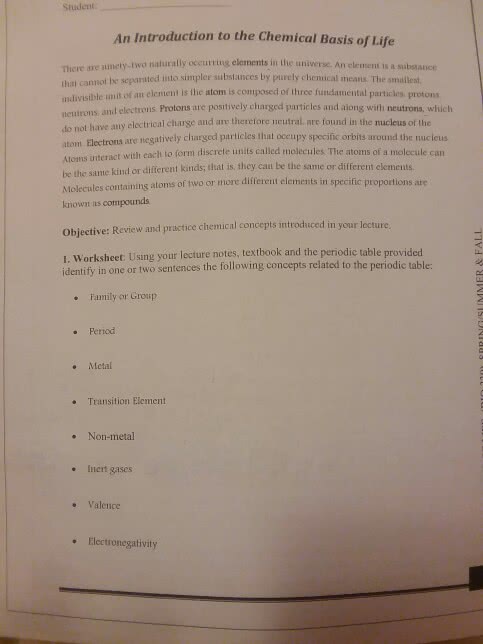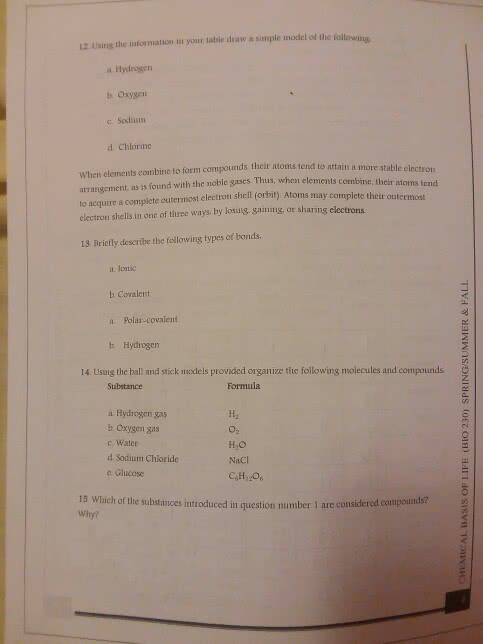12. What is the primary aim of the scientific method? A. To formulate a hypothesis B. To introduce new variables into an ExperimentC. To include control groups in an experiment D. To modify an Experiment E. To discard the results if they do not support the hypothesis.
13. Supporters of spontaneous generation believe in the theory of biogenesis. True or false14. Louise pastors experiments discounted the theory of abiogenesis true or false
15. Hey Siri is a? E. Collection of statements, for positions, or concepts that explain or accounts for a natural event B. Prediction C. Process of experimentation D. Tentative explanation to account for what has been observed or measured 16. Joseph Listerâs concept of a sepsis in the medical setting consisted of what procedure? A. The practice of the handwashing B. The use of an autoclave C. Do use of antibiotics D. Do use of gloves 17. Which of the following is the largest in size? A.Escherichia coli(bacteria)B. Amoeba proteus (protozoa)C.Poliovirus (virus) D. Mycobacterium tuberculosis/Tuberculosis E.Bacillus anthacis/Anthrax
19. The smallest and most specific of the levels of classification is species. What level of classification is directly above species A.period domainB.familyC. Genus D. Phylum20. What time refers to the degree of evolutionary relatednessBetween living organisms? A. Morphology B. Physiology C. Hierarchy . Phylogeny
21. Which of the following statements regarding evolution is correct? A. Change is that favor survival or lost B.Living things change rapidly through millions of yearsC. Evolution results and structural and functional changes in organisms D. Changes that are not beneficial are preserved 22. Who is fox used what cell component in the classification of organisms into three domains? A.mRNA B.Protiens C.rRNA D.none of the above
23. Micro organisms can be found in all natural habitats. This defines micro organisms as being? A. Microscopic B. Eukaryotic C. Parasitic D. ubiquitous
24. The prokaryotic cell structure includes A. Nucleus, mitochondria B. Ribosomes, cell membranes C. All of the above D. None of the above
25.Regarding the involvement of micro organisms and energy and nutrient flow
A. Bacteria and fungi are important and decomposition
B. Algae are characterized as photosynthetic
C. All of the above are correct
D. None of the above is correct
26. The terms parasite, hots, pathogen, biofilms, and epidemiology are associated with:
A. The role of microorganisms in defomposition
B. The role of microorganisms in bio-remediation
C. The role of viruses in the infectious disease process
D. The role of microorganisms in the infectious disease process
E. None if the above
27. The scientific method can be summarized as:
A. A process
B. Observation, hypothesis, experiment, assessment of data, conclusion
C. All the above
28.in the development of medical microbiology;
A.ferdinand Cohn discovered heat-resistant bacterial spores
B. Robert Koch linked specific organism to specific diseases
C.louis pasteur and Roberts clutch advance the germ theory of disease D. All of the above are correct E. None of the above is correct number
29 the formal system of organizing classifying and naming organisms is called A. Morphology B. Physiology C. Here Archie D. Phylogeny E. None of the above number
30. The horse fox system of classification containâs a. The domains you Eukarya, archaea, bacteria
B. The kingdoms plants, fungi, animals, protists, Monerans, C. All of the above D. None of the above
Chapter No. 2
31. The simplest form of matter not the visible into simpler substances is? 32. Positively charged subatomic particles are? 33. Neutral subatomic particles are? 34. Negatively charged subatomic particles? 35. A pure substances with a chair at the rustic number of protons, Neutrons, and electrons? 36. The atomic number? 37. The number of protons and neutrons is the? 38. Verriant forms of the same element that differ in the number of neutrons are? 39. The space surrounding the atomic nucleus where electrons are likely to be found? 40. A chemical substance that results from the combination of two or more Adams? 41. Chemical? Are formed when two or more atoms share, donate, or except electrons to form molecules. 42. Chemical bonding where electrons are shared among Adams are? 43. Chemical bonding where electrons are transferred to one Adam forming positively charged cations and negatively charged and ions? 44. Chemical bonding that is described as weak bonds between hydrogen and other Adams?
45. Regarding covalent, ionic, and hydrogen bonds, the following is true a period is covalent bonds electrons are shared among Adams be. In ionic bonds, electrons are transferred to one Adam forming (+) cations and (-) anions C. Hydrogen bonds are weak bonds between hydrogen and other Adams D. All of the above are correct E. None of the above are correct 46. Reactants also called substrates are molecules that start a reaction and products are substances left by a reaction. True or false 47. The pH scale express is the concentration of H plus ions, and it ranges from A.0 to 7 B. 1 to 14 C. 0 to 14 D. None of the above 48. Organic chemicals are compounds containing carbon bonded to nitrogen Adams. True or false 49. Carbon see is the fundamental element of life and eight. Contains four Adams and itâs our orbital be. Can form single, double, or triple covalent bonds see. Can form linear, branched, Or ringed moleculesD. All of the above are correct E. None of the above are correct 50. Biochemicals are organic compounds produced by living things and include A Carbohydrates B. Lipids C. Proteins D. Nucleic acidâs E. All of the above are correct letter F. None of the above are correct51. In Marco molecules large are compounds assembled from smaller subunits. A monomer is a subunit and a polymer is a chain of monomers. true or false
52. Proteins pre-dominant molecules and cells,There monomers are the 20 amino acids, and there are polymers are peptides, polypeptides, proteins. There are some units are linked by peptide bonds. Which of the following protein characteristics are true A proteins fold into very specific 3-D shapes B proteins function as support, enzymes, transport, defense, movement C all of the above are correct D none of the above are correct 53. DNA the deoxyribonucleic acid. DNA is formed by two long poly nucleotide strands linked by hydrogen bonds, the following is also threw a. A, C, C, GR nitrogen bases B. The DNA molecule is a double helix C. DNA functions as hereditary material
D. All of the above are correct E. None of the above are correct chapter 4. 54. Peptidoglycans, dipicolinic acid, and mycolic acid are chemicals. They are: Letter a. Associated with cell Walls and their function is protection B. Associated with the cell membranes and their function is protection C. All of the above are correct D. None of the above are correct 55. Steroids are chemicals found in pleomorphic Mycoplasma plasma. They are: E. Associated with cell walls and their function is protection B. Associated with the cell membrane and their function is protection C. All of the above are correct D. None of the above are correct 56. The cell membrane cytoplasmic membrane A. Has a phospholipid Byler B. Has it embedded proteins C. Is the conceptualized in the fluid Mosaic model D. All of the above
57. Which of the following is incorrect regarding the bacterial cell wall? Hey. Is it a target of certain antibiotics B. It determines the shape of the bacterium C. It prevents a bacterium from bursting due to changes in osmotic pressure D. Itâs comeposition where is among the major bacterial groups E. It is composed of repeating framework of lipids 58. Which of the following is incorrect regarding plasmids? E. They are extra chromosomal B. They Can become integrated into the bacterial chromosome C. They can come for protective traits D. They are essential for bacterial growth and survival E. They are important in genetic engineering techniques 59. Identification of bacteria requires a study of all but which of the following? A. Microscopic and macroscopic morphologyB. Bacterial physiology C. Quantitive analysis D. Serological analysis E. Genetic and molecular analysis
60. What is the structure of each of these functions
60. Adhesion 61. Proteins Synthesis 62. Selective permeability 63. Protective, pathogenicity 64. Site of mini bio chemical reactions 70 to 80% water 65. Iocomotion, chemotaxis 66. Nutrient storage (glycogen,PHB)
67. Conjunction 68. Protection from dehydration 69. Heat resistance(linked to calcium and dipicolinic acid) 70. Play a role infected catheters ,IUDs, artificial hip joints
Here are the key Structures for Questions 60 to 70
KEY:Flagella, endospores, so membrane, inclusion body, cytoplasmic matrix, ribosomes, cell-capsule, fimbriae, slime layer, Pilus, biofilms
Chapter No. 5
What are the eukaryotic structure of each of these functions
71. Generation of energy ATP 72. Site of ribosomes in you create excels 73. Locomotion 74. Location of chromosomes and nucleolus75. Convert sunlight energy into chemical energy such as algae and plants 76. Synthesis of nine proteins such as lipids 77. And enzyme found in tears saliva 78. Contains a verity of enzymes79. Collects and packages proteins
Here are the key for question 71 through 79
KEY:Lysosome, mitochondria, nucleus, lysozyme, Goldi-apparatus , flagella, cilia,pseudopia, PER, SER, chloroplasts, nucleus
80. Helminthes include: A. Roundworms(Nematodes) B. Tapeworms (cestodes)C. Flukes(Trematodes) D. all of the above E. None of the above
81. The cell walls of fungi are composed of what? A. Peptide Dougla can be. Chitin or cellulose C. All of the above D. None of the above
82. Where does RNA synthesis in Eukaryotes occur?
83. Asexual reproduction in fungi occurs by what process? A. Binary fission B. Meiosis C. Nuclear fusion D. Mitosis
84. Which of the following defines a lysosome? A. The Sicle that originates from the gold Golgi apparatus and contains a veriety of enzymesB a membrane bound sack contains fluids or solid particles to be digested see. A buck you all that contains reserve nutrients D. A vac you are that regulates osmotic pressure 85. Which of the following is correct regarding chloroplasts? K. They are the primary producers of organic nutrients B. They are found In LG and plant cells letter C. Oxygen gas is produced as a byproduct of their activities D. They convert the energy of sunlight into chemical energy through photosynthesis E. All of the above are correct.
89. All fungi utilize what as a nutritional substrate? A. Organic nutrients be. Carbon dioxide C. Inorganic ions D. Hydrant sulfide
86. What is formed when hyphae of two opposite fungi strains fuse in form diploidy spores?Sporangium, ConidiaB. Basidiospores, zygospores, Ascospores
C.All of the above are correct 87. What statement regarding the fungi is incorrect? E. Many species are pathogenic to field crops B. Fungi decomposed organic matter in return essential minerals to the soil C. They can be used to produce large quantities of antibiotics, alcohol, anod vitamins D. All of the above are correct E. All of the above are incorrect




